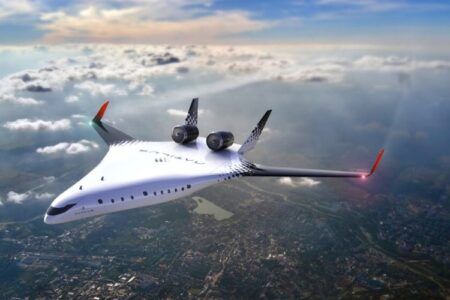The Stratolaunch aircraft, which was unveiled for the first time in May 2017 and is the latest contender for the title of ‘world’s largest aircraft’, marked a major testing milestone in December 2017 when it successfully completed its first low-speed taxi tests.
The aircraft is being developed by Stratolaunch Systems at the Mojave Air and Space Port in California. Stratolaunch was founded by Microsoft co-founder and philanthropist Paul G Allen and SpaceShipOne designer Burt Rutan. The first flight demonstration is planned for 2019.
The intention is for Stratolaunch to be available for use as an air-launch platform for low-earth orbit spacecraft by 2020. The aircraft will fly to the approximate cruising altitude of a commercial airliner and release a launch vehicle carrying the spacecraft or satellite. The launch vehicle rockets into orbit while Stratolaunch returns to the runway.
The innovative approach to launch spacecraft could significantly reduce the cost of space travel and improve access to Earth’s orbit for private and commercial endeavours.
Design differences
The double-fuselaged, all-composite Stratolaunch has a wingspan of 385ft and is powered by six Pratt & Whitney PW4056 engines. It has a maximum take-off weight of 1,300,000 lb and a payload capacity of around 550,000 lb.
Such a large and innovative aircraft requires a unique approach to the testing program. Brandon Wood, test lead at Scaled Composites, said, “Each aircraft built and tested by Scaled Composites requires a unique instrumentation and data acquisition system. Many also require a telemetry system and an accompanying control room.
“The sheer number of aircraft systems incorporated into this aircraft dictated a relatively complex aircraft data acquisition and telemetry system. Components of that system will also be used to support command and control functions during future launch operations.”
However, although the large size of Stratolaunch will pose challenges when operating compared to more conventional aircraft, it has not required a change in the techniques being used to test the aircraft.
“The aircraft configuration, specifically the distance between the dual fuselages, presents challenges during ground operations,” said Wood. “The aircraft’s stance is not compatible with many airports and the ground operations, such as towing, require more planning than conventional aircraft. The flight testing techniques will, however, be fundamentally similar to other large aircraft.”
There are some differences to the way in which such an innovative aircraft is being developed and tested. Wood said, “The aircraft’s complex structure and systems present a significant challenge, as one would expect for an aircraft this size.
“The testing methodology has to reflect the risks associated with such complex systems, so the team is following a disciplined build-up approach that started many years ago with structural coupon evaluation and systems bench testing and will not be complete until the flight envelope has been cleared.
The team is also using an approach that sees engineers take ownership for different parts of the aircraft throughout the development process.
Wood said, “The aircraft development team strives to “test early, test often” to identify design deficiencies as early as possible in the development process. Where possible, the same engineers that designed a subsystem or structural component are also responsible for its fabrication, assembly, and testing.
Future progress
Engineers have completed a number of ground tests on the aircraft since May 2017. After testing all six of the aircraft’s Pratt & Whitney turbofan engines, the aircraft successfully completed its first low-speed taxi tests in December 2017. The next phase of taxi testing increases the speed. The first flight demonstration is planned for 2019.
Stratolaunch says it is in active discussions with a number of potential customers from both the private and public sectors. However, right now, its focus is on aircraft development and completing all ground and flight-testing in preparation to first flight.
January 10, 2018




